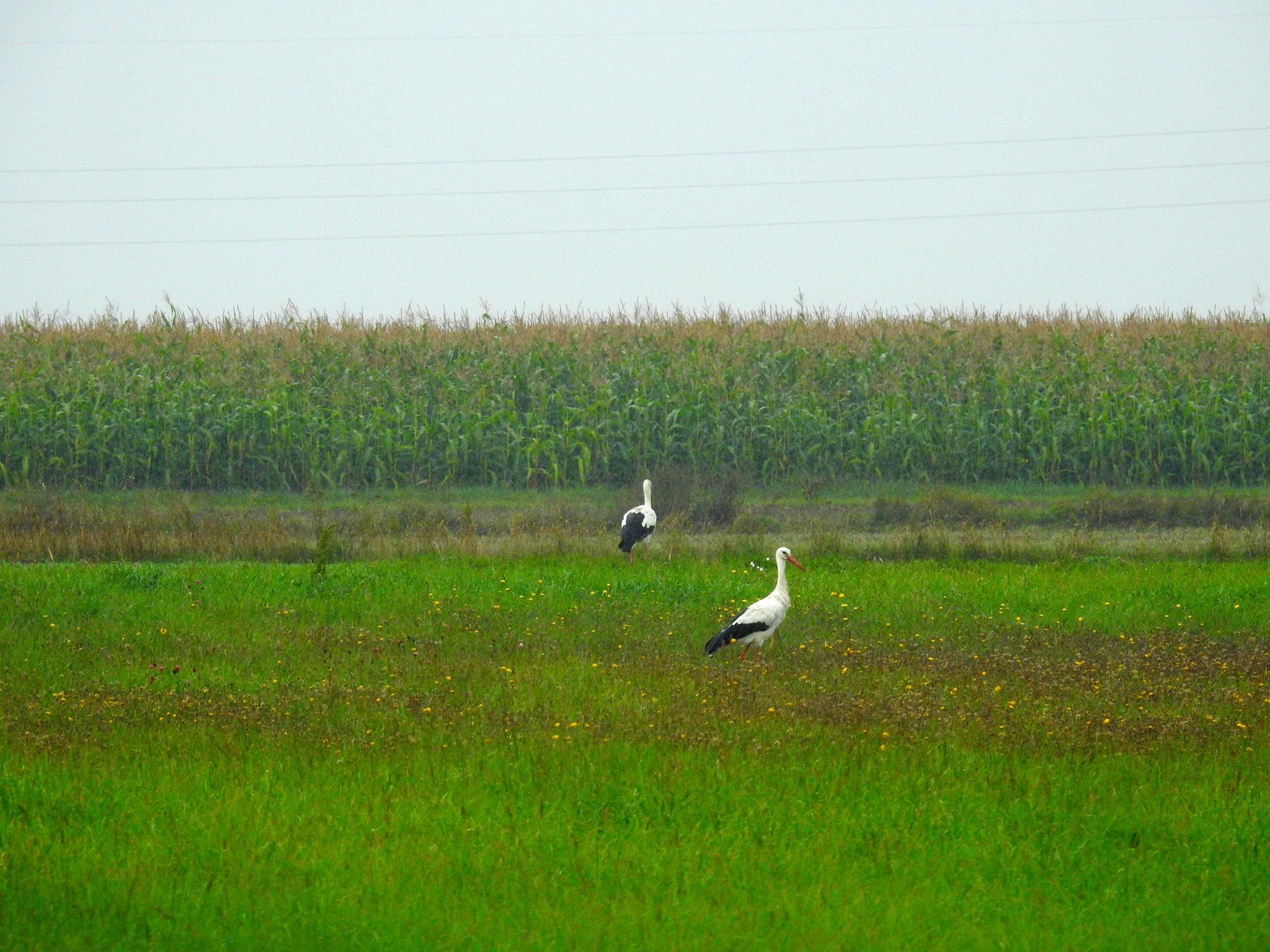 Last storks are slowly preparing for migration, and among them is our friend - the wired stork (any idea of a name for him?). Today we watched a group of 8 birds (3 adult and 5 juvenile) preying in the rain near the village of Jabłoń Kościelna in the north of Podlasie. Our stork has already flown 80 kilometers from the place of breeding. That’s not many. At least the direction is right. He’s heading south.
Last storks are slowly preparing for migration, and among them is our friend - the wired stork (any idea of a name for him?). Today we watched a group of 8 birds (3 adult and 5 juvenile) preying in the rain near the village of Jabłoń Kościelna in the north of Podlasie. Our stork has already flown 80 kilometers from the place of breeding. That’s not many. At least the direction is right. He’s heading south.
The bird has been staying there for a few days so we decided to check what stopped him there. Haying, plowing and harrowing all around - a peak of field works. Abundance of food has drawn not only storks, but also numerous clawed birds: western marsh harriers, kestrels and buzzards; tens of them were hunting in the fields today.
This year we put GSM transmitter on two young individuals bred in a rehabilitation center at the Biebrza National Park in Grzędy; the transmitters allow ongoing observation of their migration. Through this activity we want to test whether birds rehabilitated in the so-far recognized way feel the same migration anxiety that makes them move to wintering areas just like the completely wild individuals, or maybe they are the storks we see here in winter periods or wandering all over Europe.
Unfortunately, one of the devices stopped transmitting. We don’t know the reason for that. Luckily, one of the storks is well and travels along some wild individuals. We hope he will reach Africa successfully. A very long road is ahead of him. It’s full of deadly dangers: power lines, wind farms, poachers. We keep our fingers crossed.
Next year we plan to repeat the experiment. This time we want to put transmitters on 4 storks.
{gallery}/BocianLIFE/Aktualnosci/ARTYKUL_01_09_2017/{/gallery}

